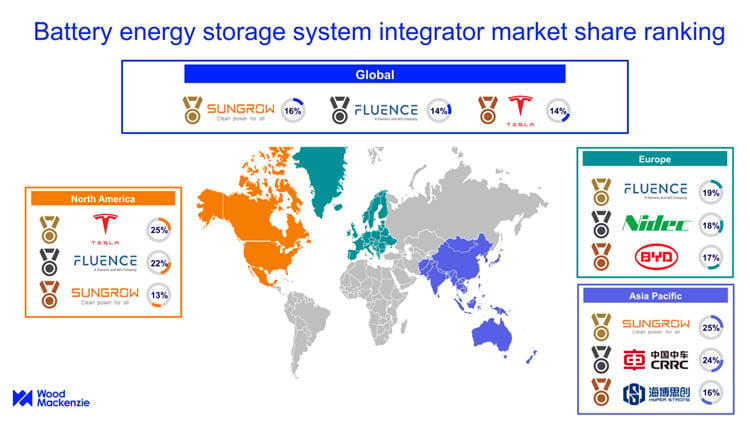
Energy Management Systems Market Report with Emphasis on Sustainable Development Goals (SDGs)
Market Size and Growth Drivers
The global Energy Management Systems (EMS) market was valued at USD 41.1 billion in 2024 and is projected to grow at a compound annual growth rate (CAGR) of 6.2% from 2025 to 2034. This growth aligns with several Sustainable Development Goals (SDGs), particularly SDG 7 (Affordable and Clean Energy), SDG 9 (Industry, Innovation, and Infrastructure), and SDG 13 (Climate Action).
Key factors driving market expansion include:
- Rising global energy demand necessitating efficient energy use.
- Stringent environmental regulations promoting sustainability.
- Industry-wide adoption of EMS to monitor, control, and optimize energy consumption, reducing operational costs and carbon footprints (supporting SDG 12: Responsible Consumption and Production).
- Technological advancements such as IoT integration, AI-driven analytics, and cloud-based platforms enabling real-time energy monitoring and predictive maintenance.
- Government initiatives and international standards like ISO 50001 fostering sustainable energy management practices.
The commercial, industrial, and utility sectors are primary adopters, with notable growth in renewable energy integration and smart grid applications, contributing to SDG 11 (Sustainable Cities and Communities) and SDG 13.
Market Trends Influenced by Sustainable Development
Emerging technologies are transforming EMS capabilities, directly supporting SDG 9 and SDG 13:
- Artificial Intelligence (AI): Enables real-time energy monitoring, predictive maintenance, and anomaly detection, improving energy efficiency.
- Internet of Things (IoT): Enhances connectivity between smart meters, sensors, and control systems, providing precise data insights for energy optimization.
- Microgrids and Distributed Energy Resources (DERs): Facilitate localized renewable energy generation, contributing to energy resilience and sustainability.
EMS solutions are increasingly vital for organizations aiming to meet carbon neutrality targets, align with the Paris Agreement, and comply with Environmental, Social, and Governance (ESG) standards, reinforcing SDG 13 and SDG 17 (Partnerships for the Goals).
Market Analysis by Service and Component
Service Segment
The Industrial Energy Management Systems (IEMS) segment is expected to exceed USD 33 billion by 2034. This is driven by energy-intensive industries such as manufacturing, chemicals, and metals focusing on efficient energy consumption to reduce costs and carbon emissions, supporting SDG 9 and SDG 12.
Component Segment
The software segment is projected to grow at a CAGR of over 7.3% through 2034. The adoption of big data analytics, AI, and machine learning in EMS software enhances energy data collection, analysis, and visualization, enabling informed decision-making aligned with SDG 9 and SDG 7.
Regional Market Insights
- United States: The EMS market is expected to surpass USD 18.7 billion by 2034, driven by government policies such as the Energy Policy Act, Energy Star, and ISO 50001 standards that promote energy efficiency and sustainability (SDG 7, SDG 13).
- Asia-Pacific (APAC): Rapid industrial growth in countries including China, India, Japan, South Korea, and Australia is increasing energy consumption. EMS adoption is critical for optimizing energy use and reducing environmental impact, supporting SDG 8 (Decent Work and Economic Growth) and SDG 12.
Market Share and Leading Companies
Major companies such as General Electric (GE) and Siemens dominate the EMS market due to their technological innovation and global presence. Their EMS solutions integrate AI, IoT, and big data analytics to enable real-time energy monitoring and optimization, contributing to SDG 9 and SDG 13.
Key Industry Players
- ABB
- C3.ai
- Dexma Sensors
- Eaton
- Emerson Electric
- ENGIE Impact
- eSight Energy
- General Electric
- GridPoint
- Honeywell
- IBM
- Ingersoll Rand
- Johnson Controls
- Mitsubishi Heavy Industries
- NX Technologies
- Optimum Energy
- Rockwell Automation
- Schneider Electric
- Siemens
- SkyFoundry
- Telkonet
- Toshiba
Recent Industry Developments
- In October 2024, Schneider Electric partnered with Noida International Airport to deploy advanced building and energy management solutions, including Electrical SCADA and Advanced Distribution Management System (ADMS). This initiative enhances operational efficiency and sustainability, supporting SDG 9 and SDG 11.
Market Segmentation
By Service:
- Industrial Energy Management Systems (IEMS)
- Building Energy Management Systems (BEMS)
- Home Energy Management Systems (HEMS)
By Component:
- Metering & Field Equipment
- Hardware
- Software
- Networking Devices
- Control Systems
- Sensors
- Others
By Application:
- Power & Energy
- Information Technology (IT)
- Manufacturing
- Enterprise
- Healthcare
- Others
Geographical Coverage
- North America: U.S., Canada, Mexico
- Europe: UK, France, Germany, Italy, Russia, Spain
- Asia Pacific: China, Australia, India, Japan, South Korea
- Middle East & Africa: Saudi Arabia, UAE, Turkey, South Africa, Egypt
- Latin America: Brazil, Argentina
This comprehensive EMS market report highlights the critical role of energy management systems in advancing global sustainability efforts and achieving multiple Sustainable Development Goals, particularly those related to clean energy, industry innovation, climate action, and responsible consumption.
1. Sustainable Development Goals (SDGs) Addressed or Connected
- SDG 7: Affordable and Clean Energy
- The article discusses energy management systems (EMS) that optimize energy consumption, integrate renewable energy, and promote energy efficiency.
- SDG 9: Industry, Innovation and Infrastructure
- Technological advancements such as AI, IoT, and cloud-based platforms in EMS support innovation and infrastructure development.
- SDG 11: Sustainable Cities and Communities
- Implementation of EMS in smart grids and urban infrastructure (e.g., Noida International Airport) contributes to sustainable urban development.
- SDG 12: Responsible Consumption and Production
- EMS helps industries monitor and reduce energy consumption and carbon footprints, promoting sustainable production.
- SDG 13: Climate Action
- EMS supports carbon footprint reduction, aligns with the Paris Agreement, and helps meet environmental and sustainability regulations.
2. Specific Targets Under Those SDGs Identified
- SDG 7: Affordable and Clean Energy
- Target 7.3: By 2030, double the global rate of improvement in energy efficiency.
- Target 7.2: Increase substantially the share of renewable energy in the global energy mix.
- SDG 9: Industry, Innovation and Infrastructure
- Target 9.4: Upgrade infrastructure and retrofit industries to make them sustainable, with increased resource-use efficiency.
- SDG 11: Sustainable Cities and Communities
- Target 11.6: Reduce the adverse per capita environmental impact of cities, including by paying special attention to air quality and municipal and other waste management.
- SDG 12: Responsible Consumption and Production
- Target 12.2: Achieve the sustainable management and efficient use of natural resources.
- Target 12.4: Achieve environmentally sound management of chemicals and wastes throughout their life cycle.
- SDG 13: Climate Action
- Target 13.2: Integrate climate change measures into national policies, strategies, and planning.
3. Indicators Mentioned or Implied to Measure Progress
- Energy Consumption Metrics
- Reduction in overall energy consumption monitored through EMS software and hardware.
- Real-time energy monitoring and predictive maintenance data enabled by AI and IoT integration.
- Carbon Footprint Reduction
- Measurement of carbon emissions reduction by industries using EMS tools.
- Tracking alignment with global frameworks such as the Paris Agreement and ESG standards.
- Renewable Energy Integration
- Increase in the share of distributed energy resources (DERs) and microgrids using renewable sources.
- Adoption of Standards
- Compliance with ISO 50001 energy management standards as an indicator of improved energy efficiency.
- Market Growth and Investment
- Growth in EMS market size and adoption rates in various sectors and regions as an indirect indicator of progress.
4. Table of SDGs, Targets and Indicators
| SDGs | Targets | Indicators |
|---|---|---|
| SDG 7: Affordable and Clean Energy |
|
|
| SDG 9: Industry, Innovation and Infrastructure |
|
|
| SDG 11: Sustainable Cities and Communities |
|
|
| SDG 12: Responsible Consumption and Production |
|
|
| SDG 13: Climate Action |
|
|
Source: gminsights.com







